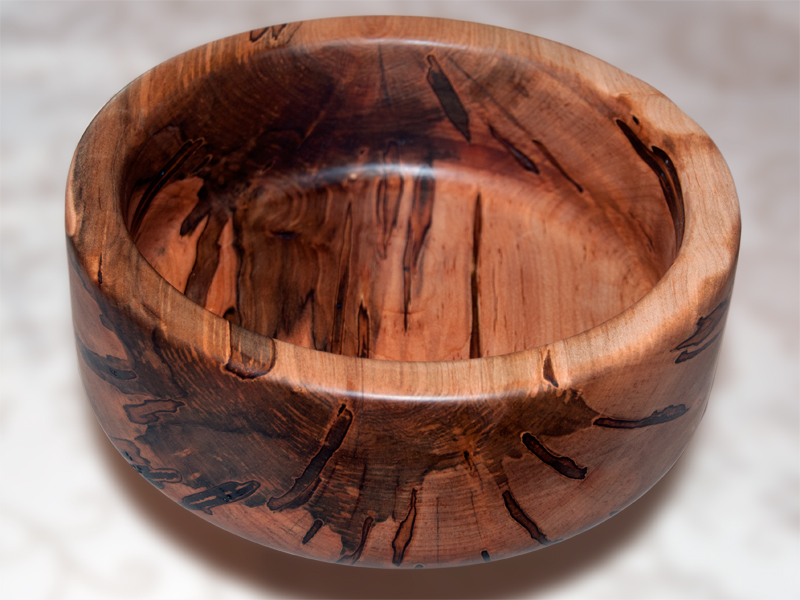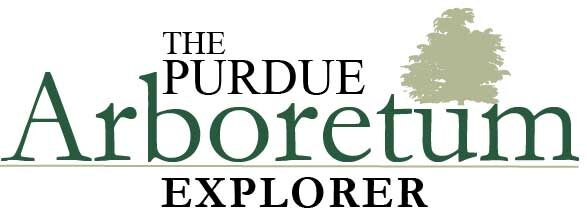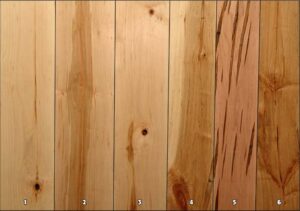Acer saccharinum
Summary
Boards 1 and 2 represent the best the species has to offer. Board 1 is all sapwood and Board 2 contains a section of darker flesh colored heartwood, typical of silver maple. The sapwood of soft maple is typically not as white as hard maple. Boards 3 and 4 show characteristic knots and color variation between heartwood and sapwood. Numerous pith flecks are present in all pieces. Pith flecks are usually much more common in soft than hard maple. Board 5 shows the characteristic holes and flagging from the Columbian Timber Beetle. Board 6 is quartered and cut from the very heart of the log. The pith is shown near the center of the piece.
History
Red maple has a reduced western range but grows throughout the eastern United States including the coastal regions. Like silver maple, it can be found in swampy sites as well as on drier sites with white pine and other northern hardwoods in the northeast. Most of the silver maple is produced in the Mississippi Delta and central states region while red maple dominates more to the east. Both species are medium-sized trees from 50 to 80 feet tall and two to three feet in diameter. The largest silver maple reported is 7.8 feet in diameter at 4½ feet above the ground. The largest red maple is 7.3 feet in diameter at 4½ feet above the ground.
Color & Texture
The sapwood is white and wide; the heartwood is a light brown or pink with a grayish or greenish cast. The contrast
between the white sapwood and dark heartwood is more distinct in red maple than silver maple. The wood has no
characteristic odor. Soft maple can develop a beautiful curl just like it’s hard maple counterpart. Soft maple commonly
has light brown streaks along the grain.
Anatomical and Microscopy
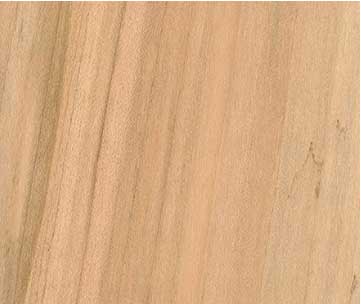
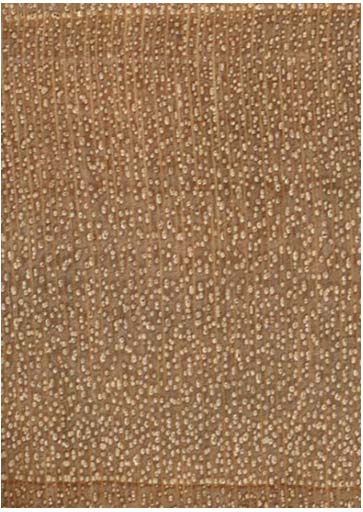
diffuse-porous; Rays: Ray width 1 to 3 cells; Parenchyma: rare, banded (marginal)
Wood Properties
- Workability
- In terms of planning, shaping, turning, and boring,the wood of soft maple is rated medium to below average in
comparison to the other woods reported here. - Strength
- Silver maple weighs about 33 pounds per cubic foot while red maple weighs about 38 pounds per cubic foot. In the
lumber trade, soft maple is used to distinguish these two species because they are lighter and “softer” than hard or sugar maple. Red maple isa
relatively strong wood, whereas silver maple is not. - Steam Bending
- Relatively poor choice for steam bending
- Drying
- A moderate kiln schedule can be used for drying
- Shrinkage
- Total volumetric shrinkage of silver and red maple is relatively low when compared to the other hardwoods.
- Decay
- Not resistant to decay
Products
Soft Maple lumber is inexpensive and was commonly used for upholstered furniture frames. This particular grade
separation would also make an attractive, rustic paneling.
